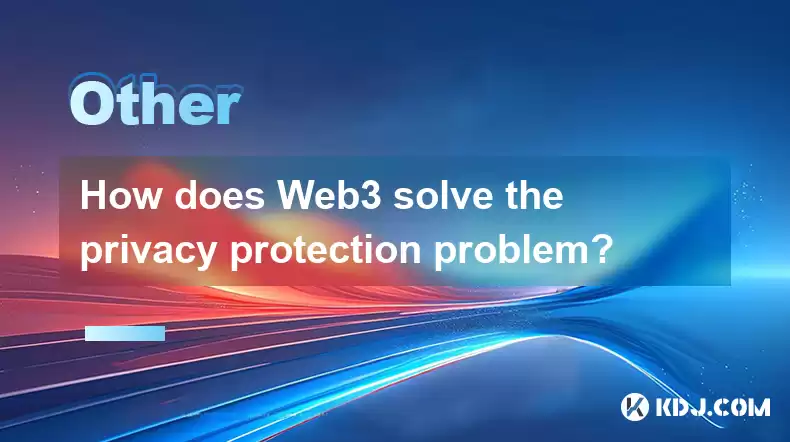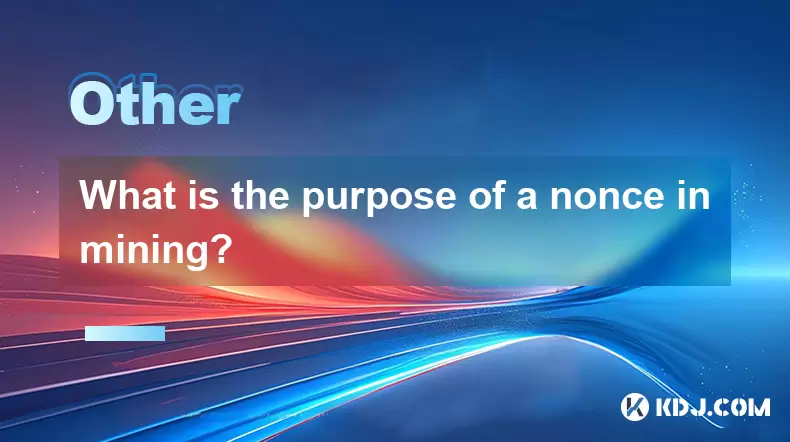-
 Bitcoin
Bitcoin $114400
0.68% -
 Ethereum
Ethereum $3550
2.48% -
 XRP
XRP $3.001
4.99% -
 Tether USDt
Tether USDt $0.9999
0.01% -
 BNB
BNB $757.6
1.46% -
 Solana
Solana $162.9
1.07% -
 USDC
USDC $0.9998
0.00% -
 TRON
TRON $0.3294
0.91% -
 Dogecoin
Dogecoin $0.2015
2.46% -
 Cardano
Cardano $0.7379
2.01% -
 Stellar
Stellar $0.4141
8.83% -
 Hyperliquid
Hyperliquid $37.83
-1.91% -
 Sui
Sui $3.454
0.76% -
 Chainlink
Chainlink $16.62
3.53% -
 Bitcoin Cash
Bitcoin Cash $554.6
2.84% -
 Hedera
Hedera $0.2486
3.91% -
 Ethena USDe
Ethena USDe $1.001
0.00% -
 Avalanche
Avalanche $21.95
3.34% -
 Toncoin
Toncoin $3.563
-2.85% -
 Litecoin
Litecoin $112.7
2.65% -
 UNUS SED LEO
UNUS SED LEO $8.977
0.13% -
 Shiba Inu
Shiba Inu $0.00001232
1.85% -
 Uniswap
Uniswap $9.319
2.93% -
 Polkadot
Polkadot $3.632
1.38% -
 Monero
Monero $307.2
2.36% -
 Dai
Dai $0.9997
-0.03% -
 Bitget Token
Bitget Token $4.340
0.91% -
 Pepe
Pepe $0.00001048
1.07% -
 Cronos
Cronos $0.1348
3.26% -
 Aave
Aave $261.5
1.93%
How does Web3 solve the privacy protection problem?
Decentralized Identity (DID) in Web3 empowers individuals to control their personal data, reducing the risk of unauthorized access and data breaches associated with centralized systems.
Feb 16, 2025 at 02:18 pm

Key Points
- Decentralized Identity (DID): Provides users with control over their personal data, eliminating the need for centralized authorities.
- Zero-Knowledge Proofs (ZKPs): Enable users to prove their identity or other attributes without revealing the underlying information, ensuring privacy and anonymity.
- Blockchain Encryption: Utilizes cryptographic algorithms and distributed ledger technology to secure and encrypt data, preventing unauthorized access and breaches.
- Homomorphic Encryption: Allows computations to be performed on encrypted data, maintaining privacy and confidentiality throughout the process.
- Data Minimization: Principles that advocate for the collection and retention of only the essential personal data, reducing the risk of privacy breaches.
How Web3 Solves the Privacy Protection Problem
Decentralized Identity (DID)
Web3's DID systems enable users to create and manage their digital identities independently of central authorities. These identities are based on self-sovereign identifiers (SSIs), which are unique digital identifiers controlled by the individual. This decentralized approach eliminates the risk of censorship, data manipulation, and identity theft associated with centralized systems.
Zero-Knowledge Proofs (ZKPs)
ZKPs are cryptographic techniques that allow individuals to prove the possession of certain attributes or knowledge without revealing the underlying information. In the context of Web3, ZKPs can be used for authentication, age verification, or financial transactions without disclosing personal details. This ensures privacy and anonymity while meeting verification requirements.
Blockchain Encryption
Web3 applications utilize blockchain technology, which leverages distributed ledger and cryptographic algorithms to securely store and manage data. Cryptographic techniques, such as hashing, encryption, and digital signatures, ensure the confidentiality and integrity of sensitive data. Additionally, the decentralized nature of blockchains prevents single points of failure and malicious attacks.
Homomorphic Encryption
Homomorphic encryption is a cutting-edge cryptographic technique that allows computations to be performed on encrypted data. This implies that sensitive information can be processed and analyzed without ever being decrypted, preserving privacy and reducing the risk of data breaches.
Data Minimization
Web3's emphasis on data privacy includes adhering to data minimization principles. These principles encourage the collection and retention of only the personal data necessary for specific purposes. By limiting the amount of data stored, the risk of unauthorized access or misuse is significantly reduced.
FAQs
Q: What are the benefits of using Web3 for privacy protection?
A: Web3 provides decentralized identity, zero-knowledge proofs, blockchain encryption, homomorphic encryption, and data minimization, enhancing privacy and reducing the risk of data breaches.
Q: How can I create a DID?
A: Various DID providers offer solutions for generating and managing your own decentralized identity.
Q: What are some real-world applications of Web3 for privacy protection?
A: Web3's privacy-enhancing features are used in various applications, such as self-sovereign identity management, anonymous transactions, and secure data sharing.
Q: Is Web3 completely immune to privacy risks?
A: While Web3 offers significant advancements in privacy, it is not immune to all risks. Malicious actors may still attempt to exploit vulnerabilities in smart contracts, or user behavior may inadvertently compromise privacy.
Q: How can I learn more about Web3 and privacy protection?
A: There are numerous online resources, conferences, and communities dedicated to exploring the intersection of Web3 and privacy. Engaging with these channels can provide valuable insights and updates.
Disclaimer:info@kdj.com
The information provided is not trading advice. kdj.com does not assume any responsibility for any investments made based on the information provided in this article. Cryptocurrencies are highly volatile and it is highly recommended that you invest with caution after thorough research!
If you believe that the content used on this website infringes your copyright, please contact us immediately (info@kdj.com) and we will delete it promptly.
- Cryptocurrency, Altcoins, and Profit Potential: Navigating the Wild West
- 2025-08-04 14:50:11
- Blue Gold & Crypto: Investing Disruption in Precious Metals
- 2025-08-04 14:30:11
- Japan, Metaplanet, and Bitcoin Acquisition: A New Era of Corporate Treasury?
- 2025-08-04 14:30:11
- Coinbase's Buy Rating & Bitcoin's Bold Future: A Canaccord Genuity Perspective
- 2025-08-04 14:50:11
- Coinbase's Buy Rating Maintained by Rosenblatt Securities: A Deep Dive
- 2025-08-04 14:55:11
- Cryptos, Strategic Choices, High Returns: Navigating the Meme Coin Mania
- 2025-08-04 14:55:11
Related knowledge

What is the purpose of a nonce in mining?
Aug 04,2025 at 05:56pm
Understanding the Role of a Nonce in Cryptocurrency MiningIn the world of cryptocurrency mining, the term nonce stands for 'number used only once.' Th...

What is the difference between on-chain and off-chain transactions?
Aug 02,2025 at 04:22pm
Understanding On-Chain TransactionsOn-chain transactions refer to digital asset transfers that are recorded directly on a blockchain ledger. These tra...

How are blocks linked together?
Aug 04,2025 at 06:56am
Understanding the Structure of a BlockchainA blockchain is a decentralized digital ledger composed of a sequence of blocks, each containing a list of ...

What is a node's role in a blockchain network?
Aug 03,2025 at 03:16pm
Understanding the Function of a Node in a Blockchain NetworkA node is a fundamental component of any blockchain network, acting as a participant that ...

How are transactions verified on a blockchain?
Aug 04,2025 at 12:35am
Understanding the Role of Nodes in Transaction VerificationIn a blockchain network, nodes are fundamental components responsible for maintaining the i...

What is the double-spending problem and how does blockchain prevent it?
Aug 02,2025 at 01:07pm
Understanding the Double-Spending ProblemThe double-spending problem is a fundamental challenge in digital currency systems where the same digital tok...

What is the purpose of a nonce in mining?
Aug 04,2025 at 05:56pm
Understanding the Role of a Nonce in Cryptocurrency MiningIn the world of cryptocurrency mining, the term nonce stands for 'number used only once.' Th...

What is the difference between on-chain and off-chain transactions?
Aug 02,2025 at 04:22pm
Understanding On-Chain TransactionsOn-chain transactions refer to digital asset transfers that are recorded directly on a blockchain ledger. These tra...

How are blocks linked together?
Aug 04,2025 at 06:56am
Understanding the Structure of a BlockchainA blockchain is a decentralized digital ledger composed of a sequence of blocks, each containing a list of ...

What is a node's role in a blockchain network?
Aug 03,2025 at 03:16pm
Understanding the Function of a Node in a Blockchain NetworkA node is a fundamental component of any blockchain network, acting as a participant that ...

How are transactions verified on a blockchain?
Aug 04,2025 at 12:35am
Understanding the Role of Nodes in Transaction VerificationIn a blockchain network, nodes are fundamental components responsible for maintaining the i...

What is the double-spending problem and how does blockchain prevent it?
Aug 02,2025 at 01:07pm
Understanding the Double-Spending ProblemThe double-spending problem is a fundamental challenge in digital currency systems where the same digital tok...
See all articles

























































































